June 4, 2021 - Day Fourteen, Flight Three
Chimney Rock, Courthouse Rock, Goodland Airport-Kansas
|
| I departed Scotts Bluff airport and followed the North Platte River east. |
| |
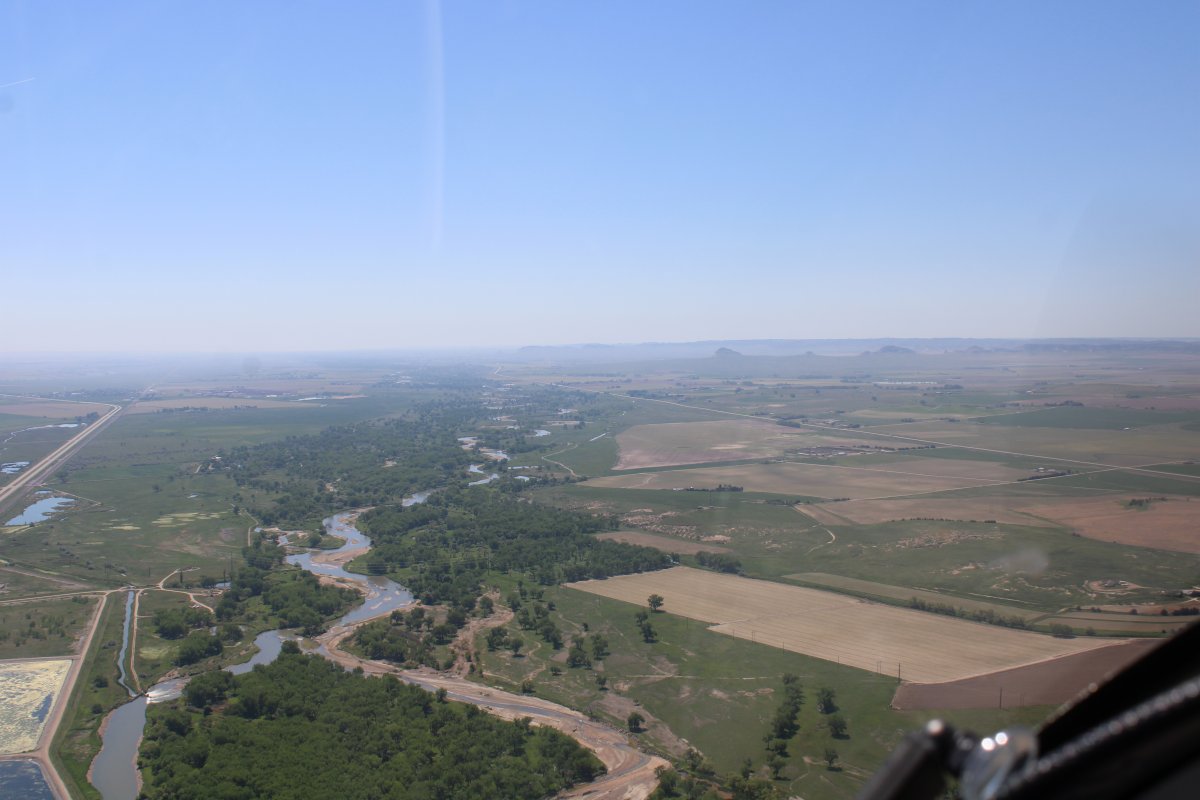 |
|
|
The remnants of a mountain.
|
| |
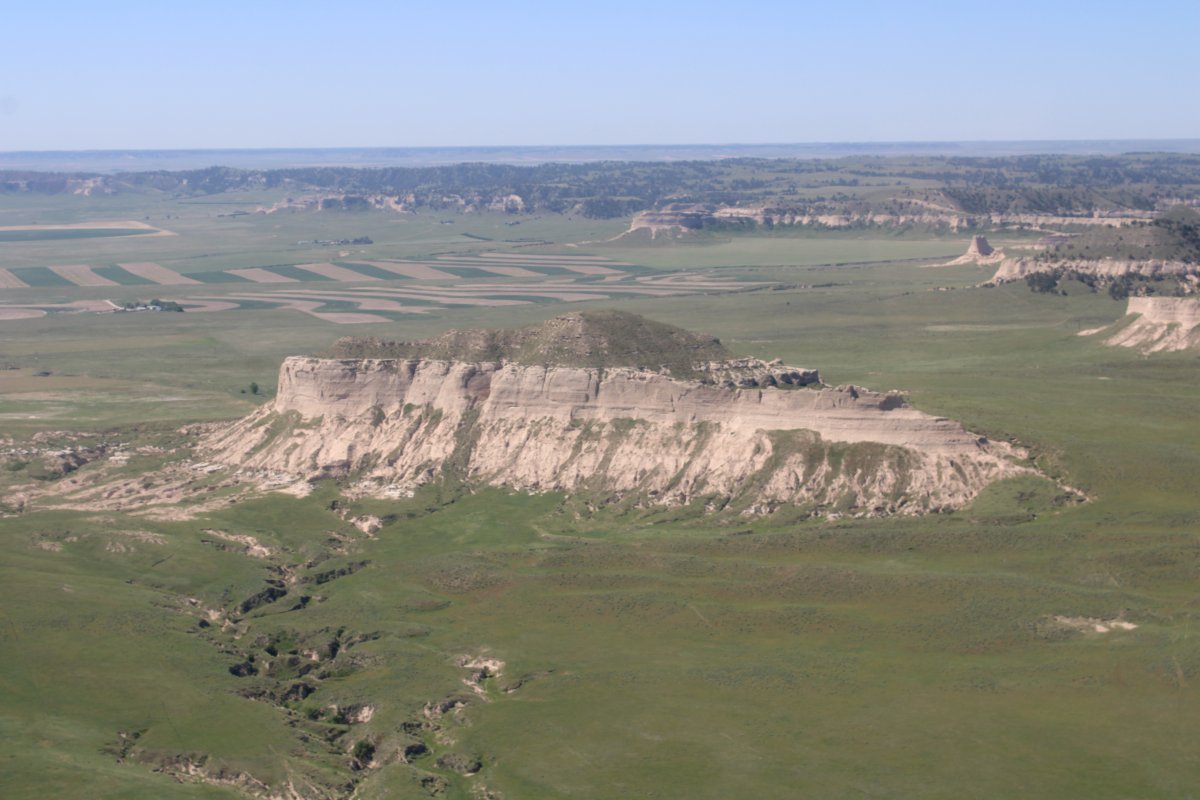 |
|
|
About 20 miles southeast of Scotts Bluff, I came to Chimney Rock. If any one thing symbolizes the Oregon Trail, this is it. One of the most prominent features along the Oregon Trail, it rises almost 300 feet from the valley floor.
Based on sketches, paintings, written accounts, and the 1897 photograph by Darton, Chimney Rock was taller when it was first seen by settlers, but has since been reduced in height by erosion and lightning and reportedly by cannon fire from military aircraft
|
| |
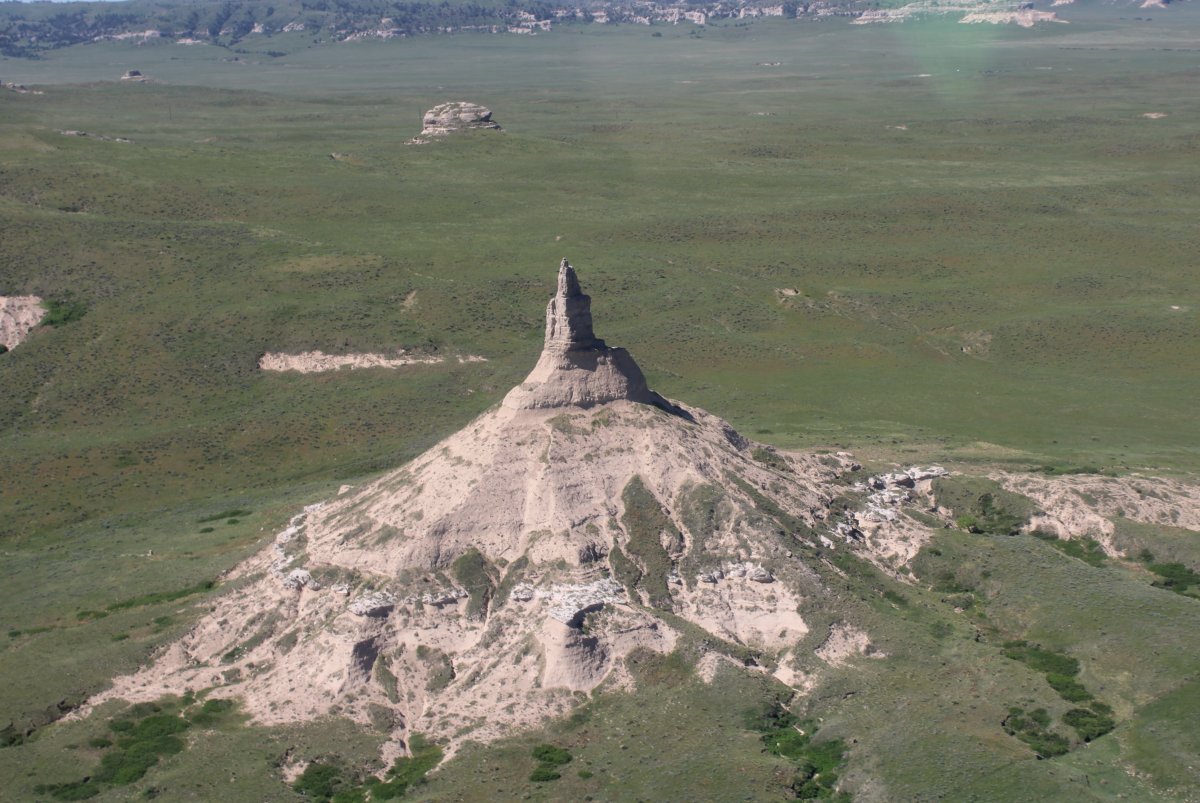 |
|
| An 1897 photograph of Chimney Rock. (Wikimedia) |
| |
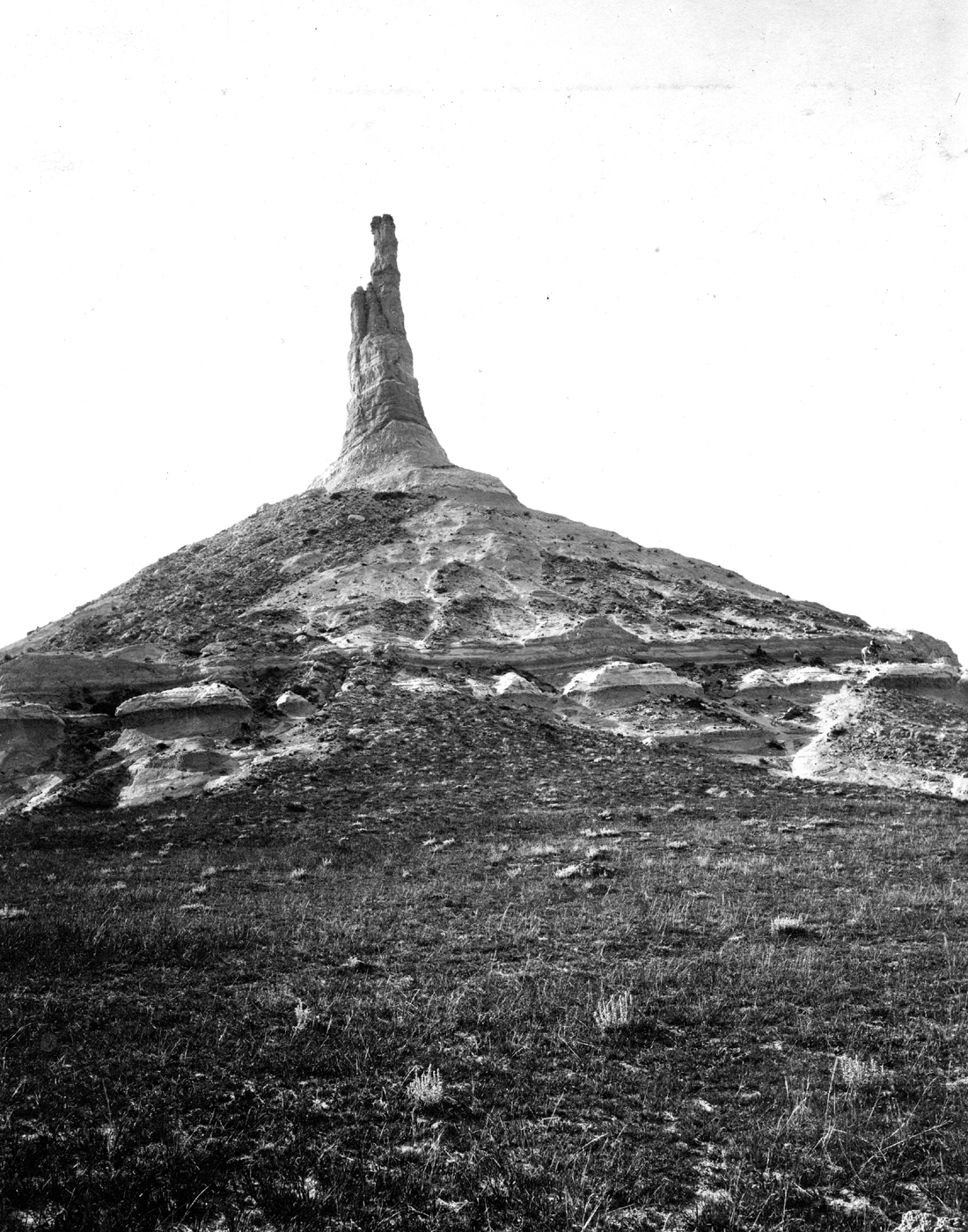 |
|
| Looking west at Chimney Rock and the surrounding area. The North Platte River is to the right (north). |
| |
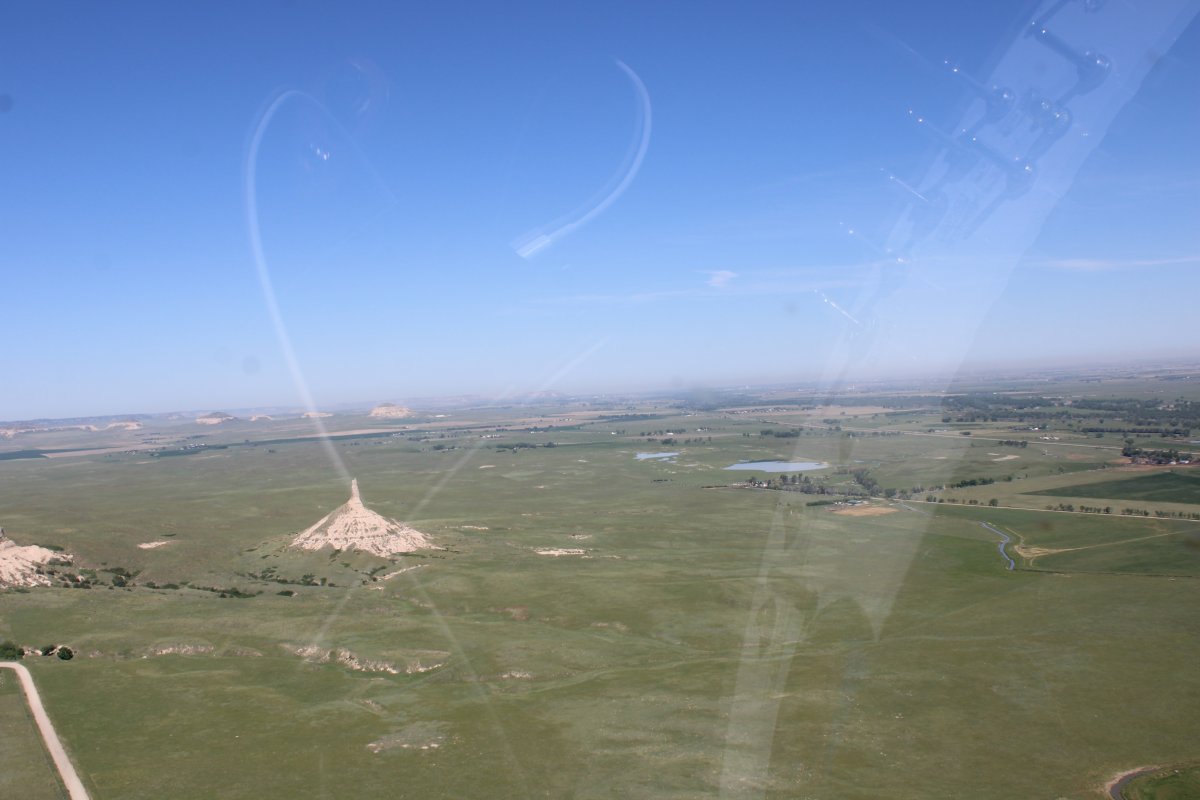 |
|
|
There is a little museum nearby and also a cemeterey containing some of those who may have died from sickness along the Oregon Trail. From the cemetery you can hike to the base of Chimney Rock.
.
|
| |
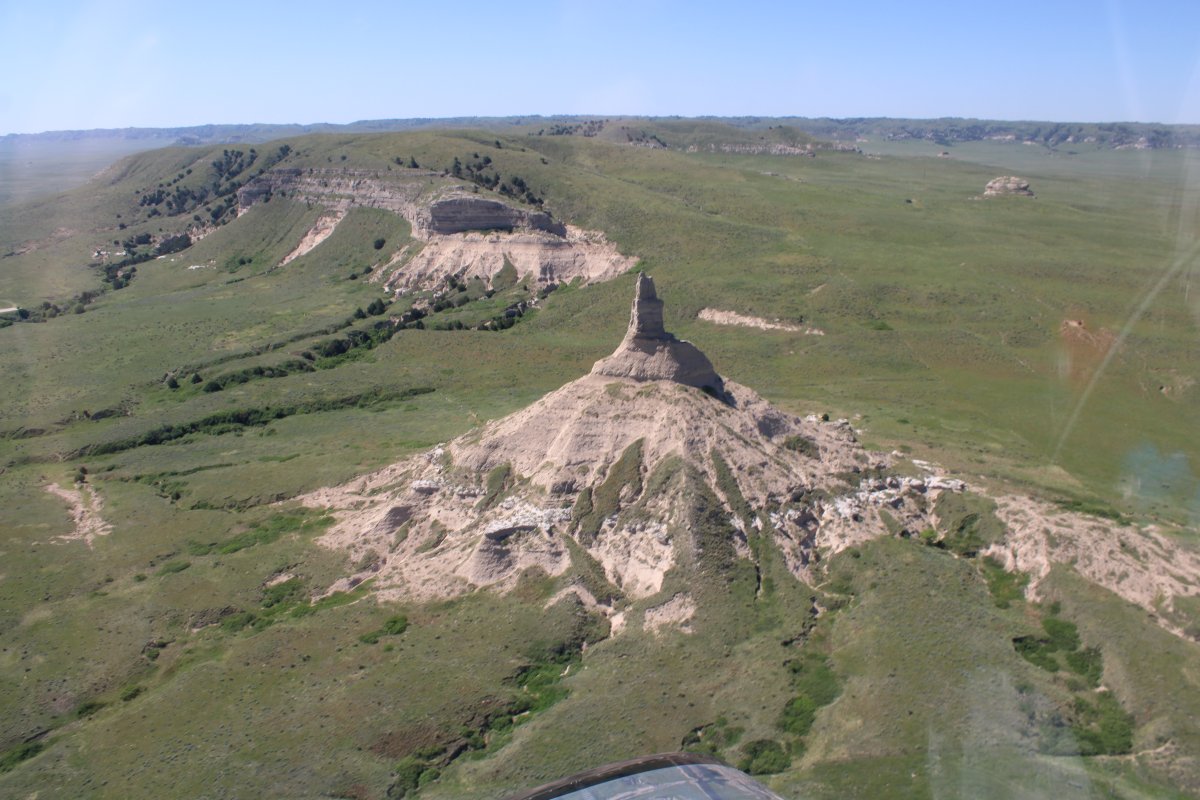 |
|
|
Looking south.
|
| |
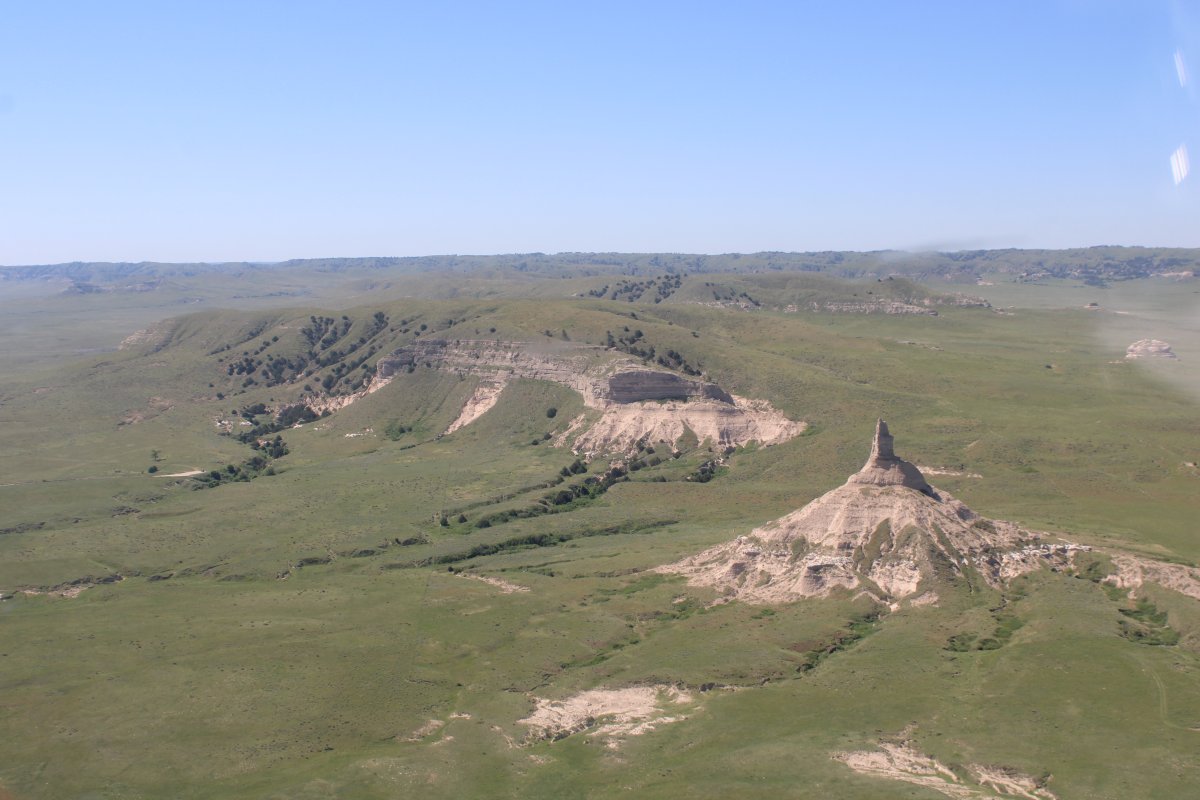 |
|
| Checking out the North Platt River. |
| |
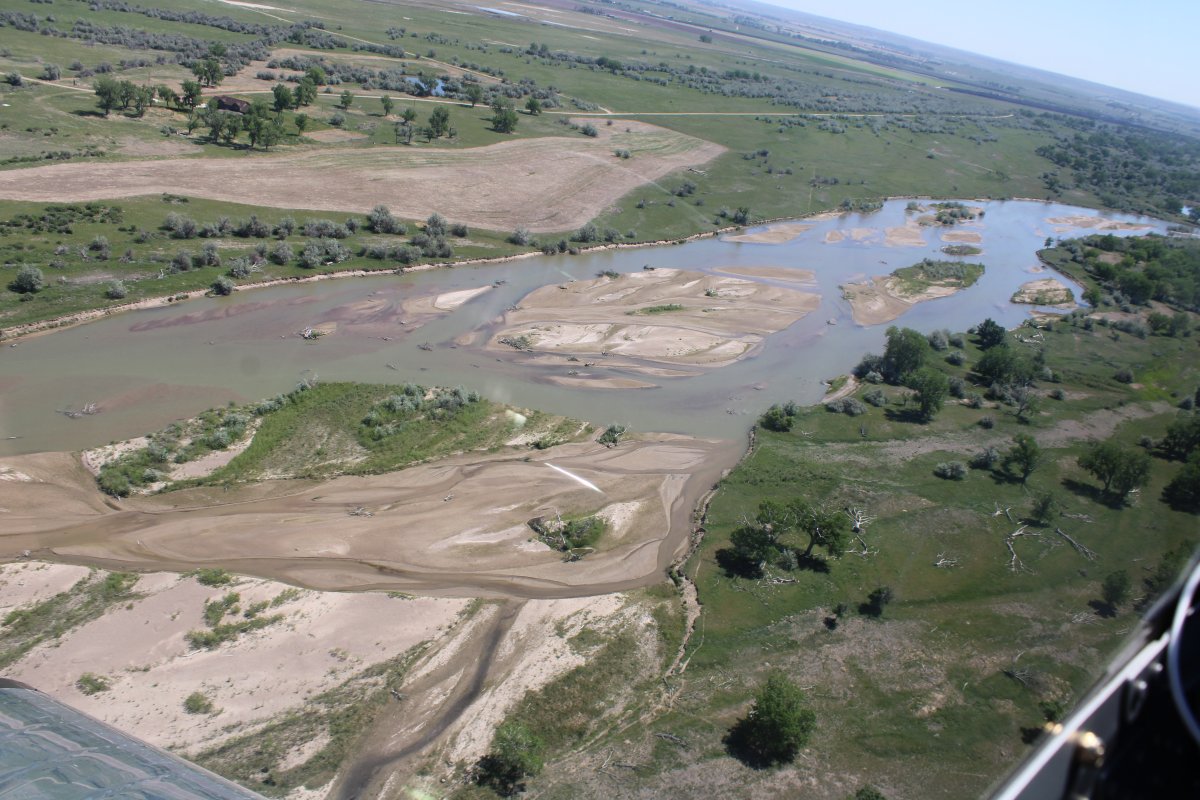 |
|
| Looking for Oregon Trail wagon ruts. Can you see any? I think I see some. |
| |
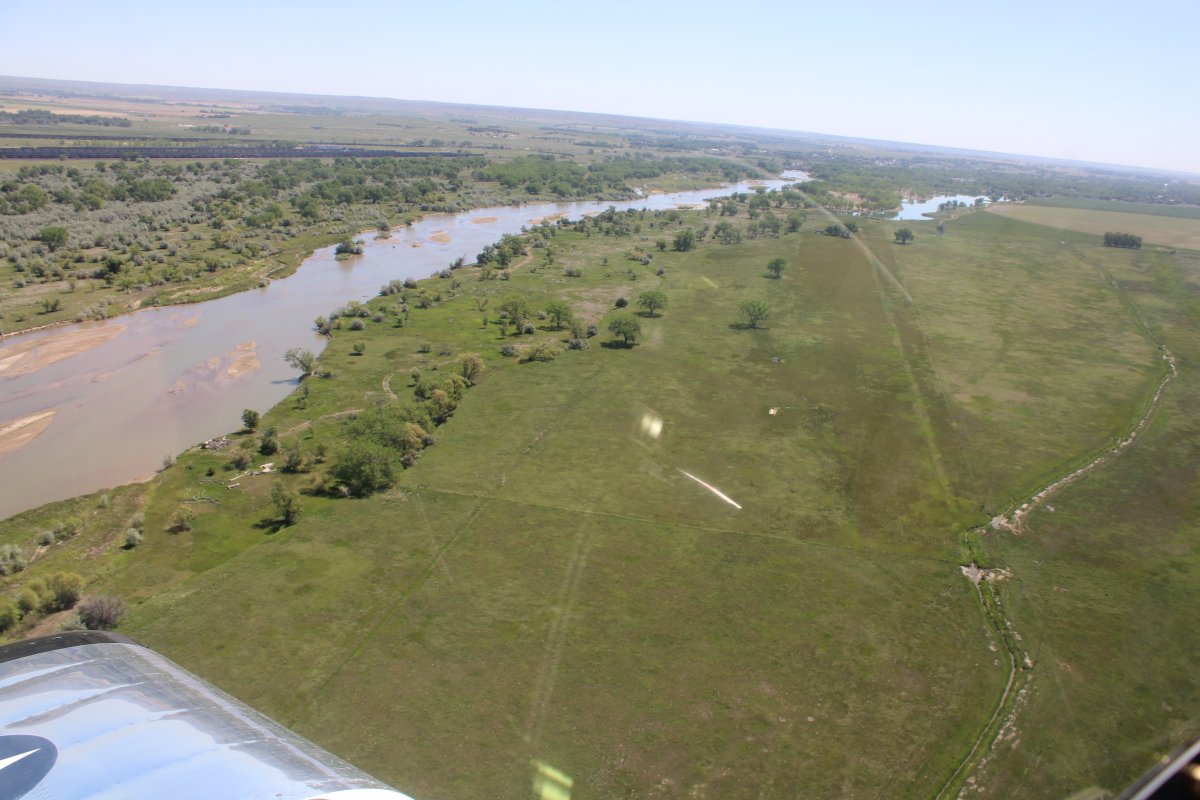 |
|
|
|
| |
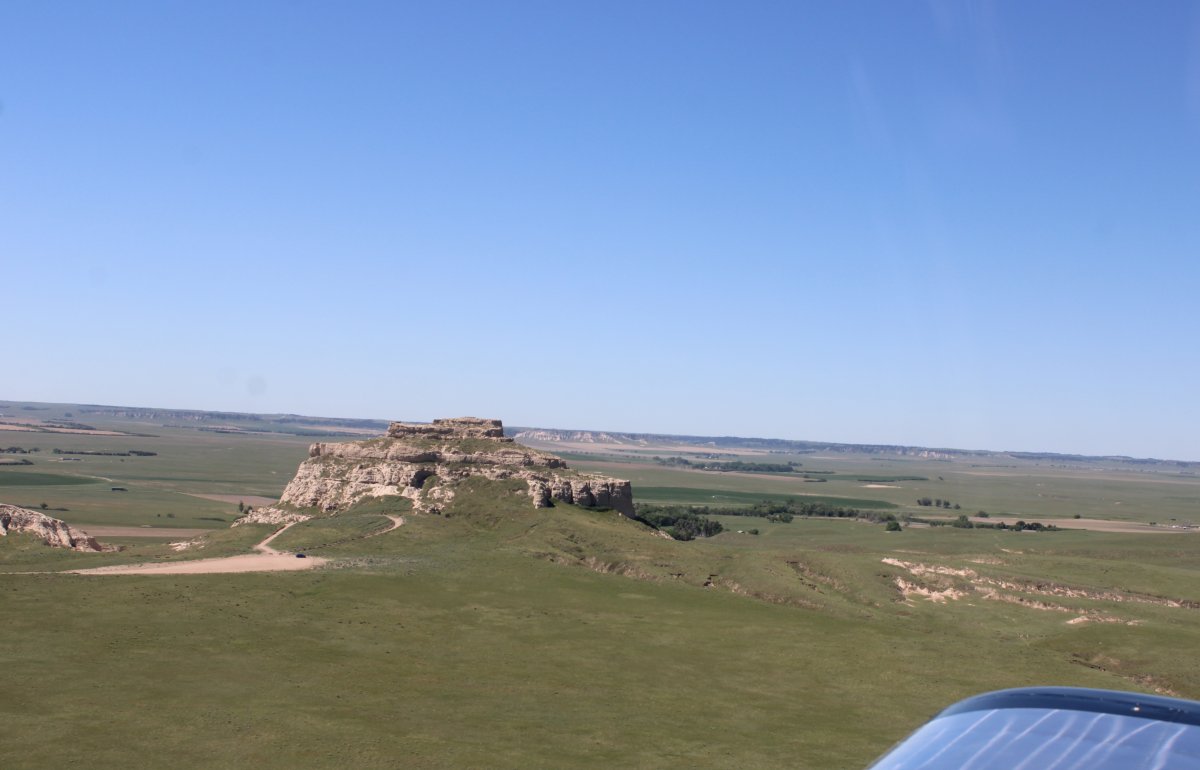 |
|
| Hundreds of westward-bound emigrants mentioned Courthouse Rock (originally also McFarlan's Castle) in their travel logs and journals. The name "Courthouse" was first used in 1837. In 1845, one traveler described the rock as "resembling the ruins of an old castle [which] rises abruptly from the plain....It is difficult to look upon it and not believe that art had something to do with its construction. The voyagers have called it the Courthouse; but it looks infinitely more like the Capitol." |
| |
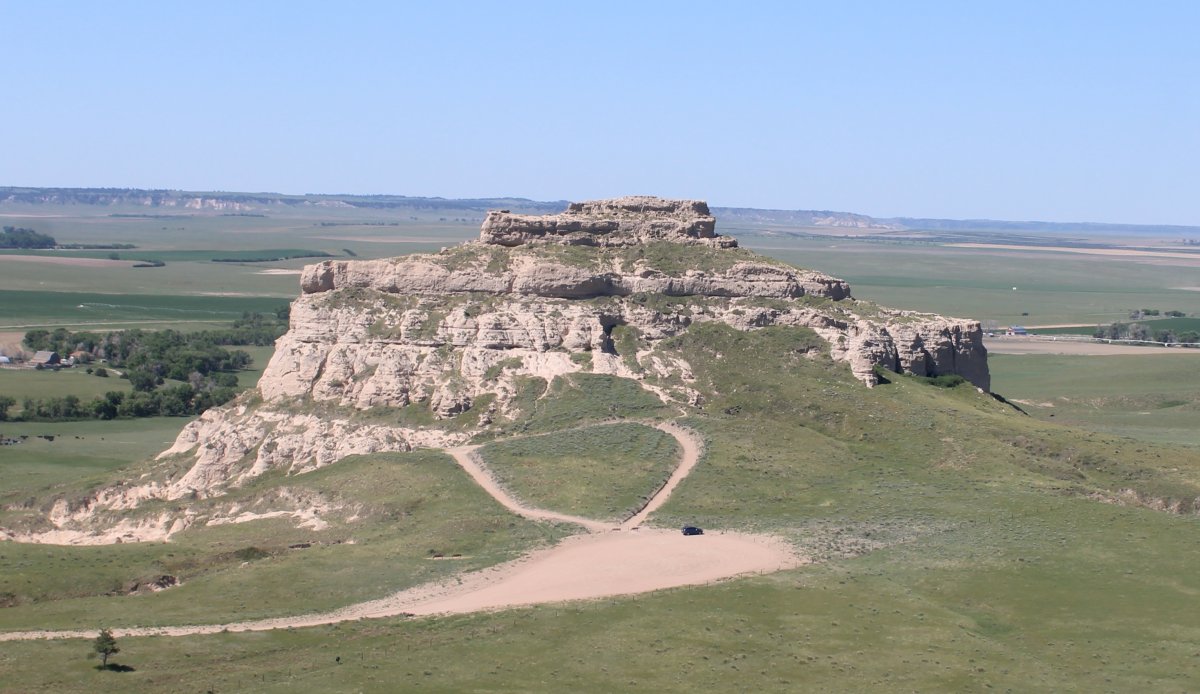 |
|
|
At Courthouse Rock, I left the Oregon Trail and headed southeast.
|
| |
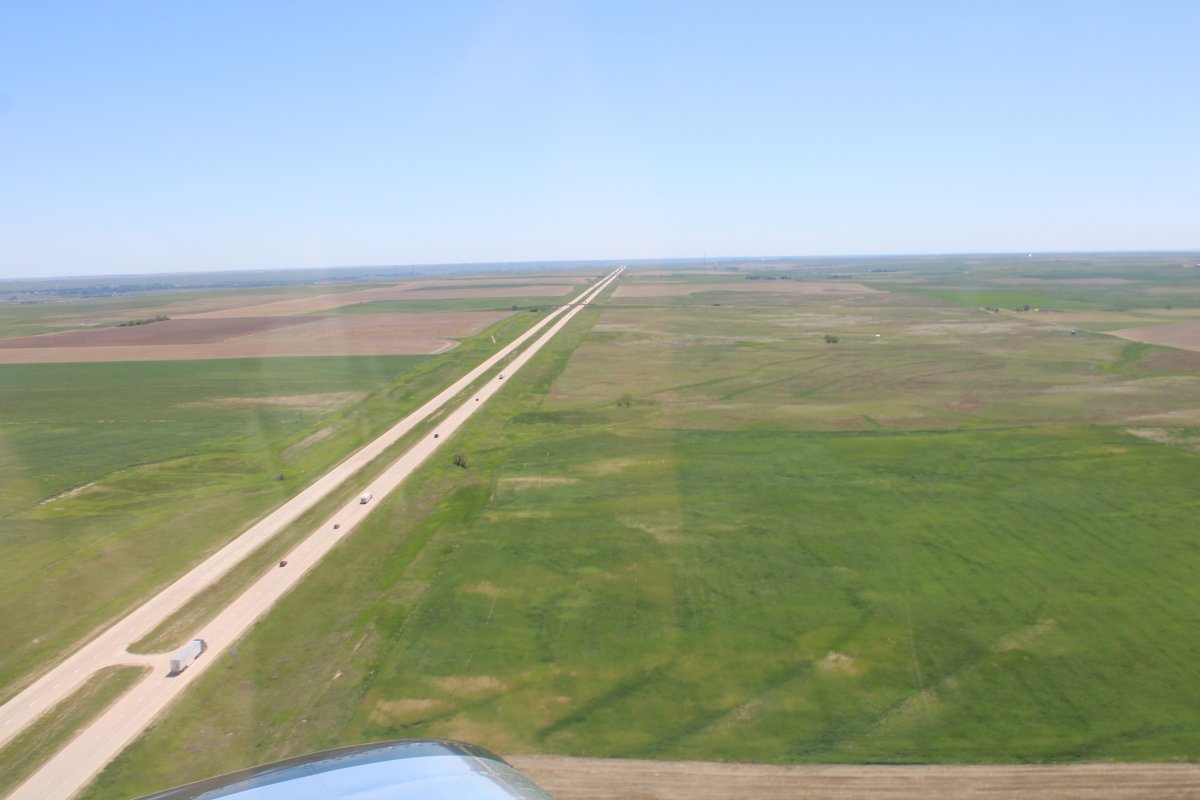 |
|
| I was now definitely back in the Great Plains area. Time for a little low-level action. |
| |
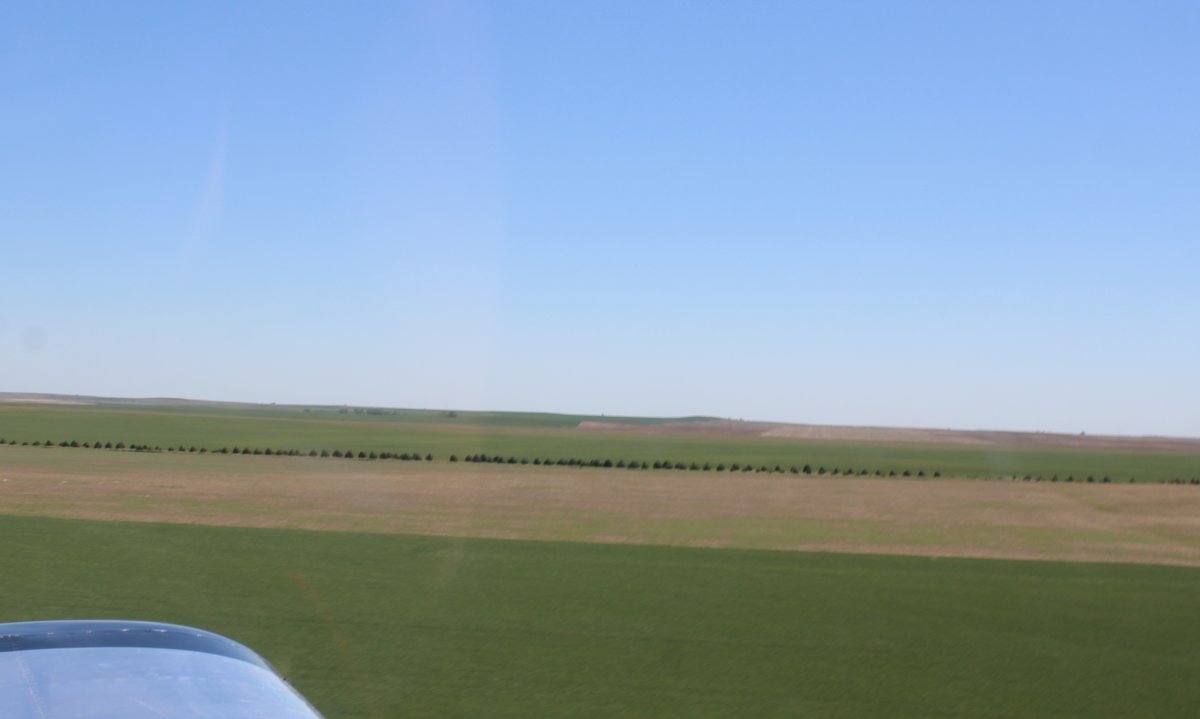 |
|
| I left Nebraska and entered the northeast corner of Colorado. |
| |
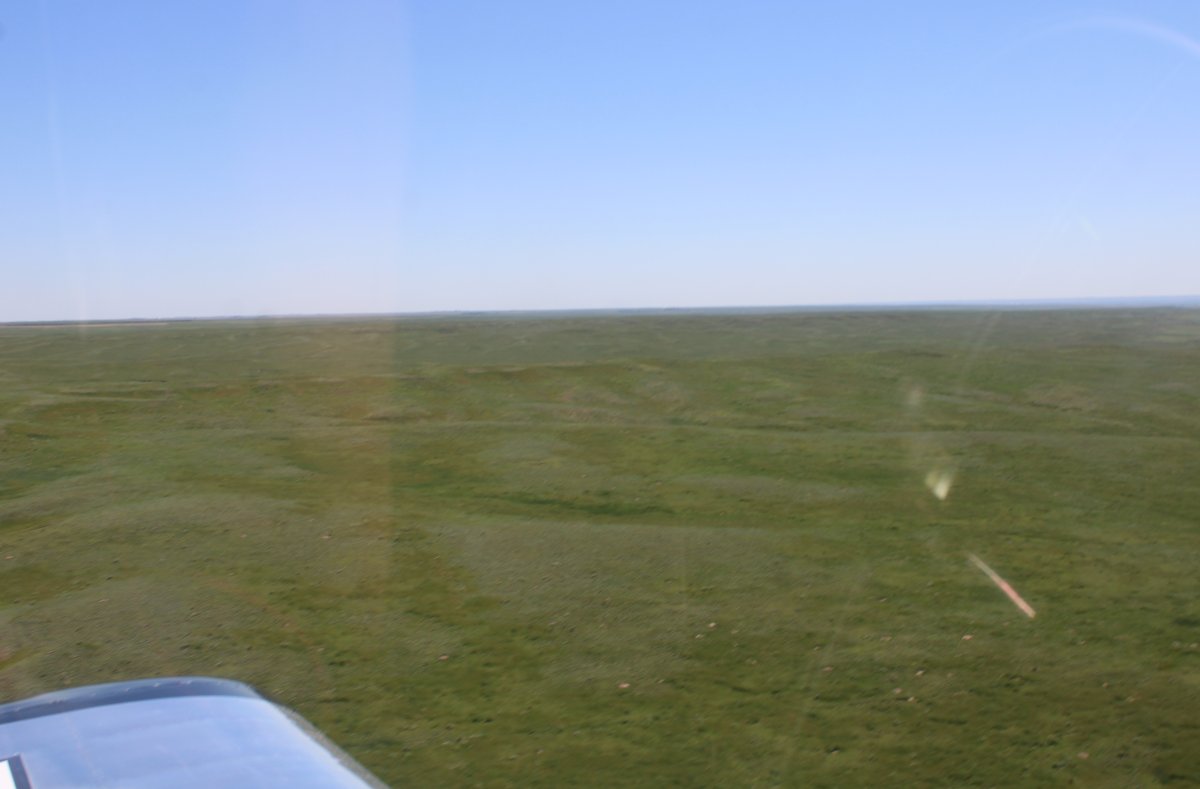 |
|
| Crossing the South Platte River. |
| |
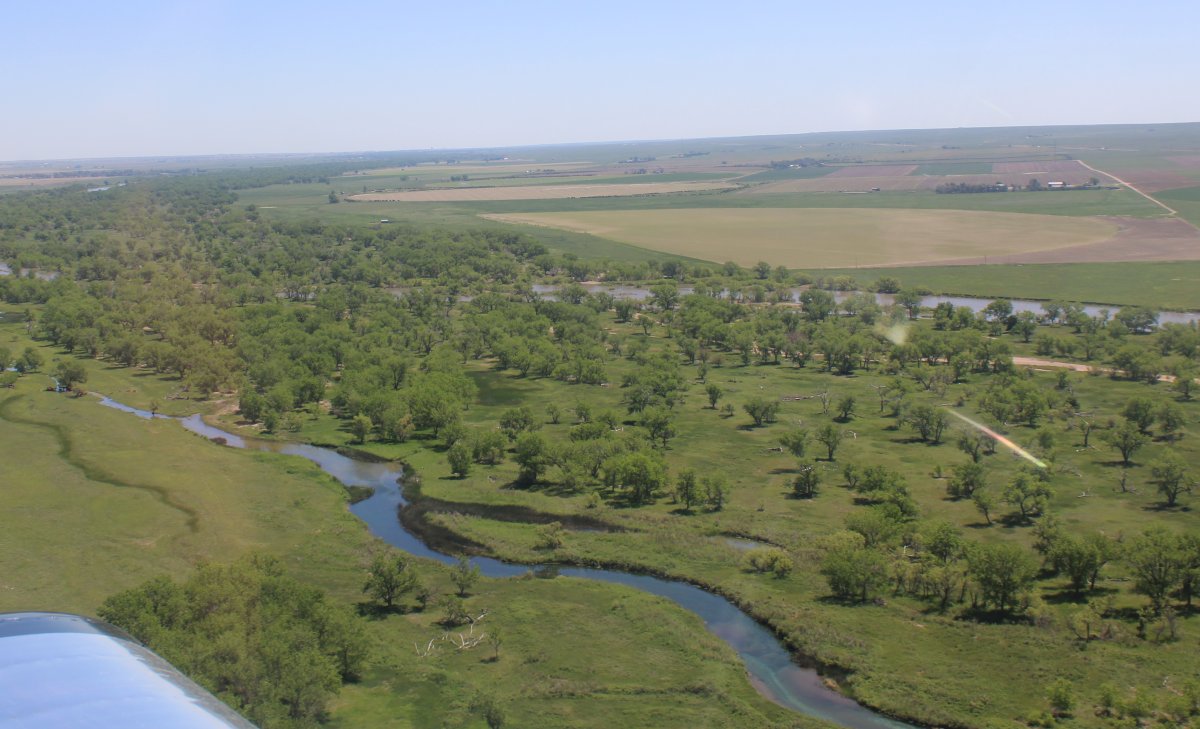 |
|
|
Looking west at the South Platte.
|
| |
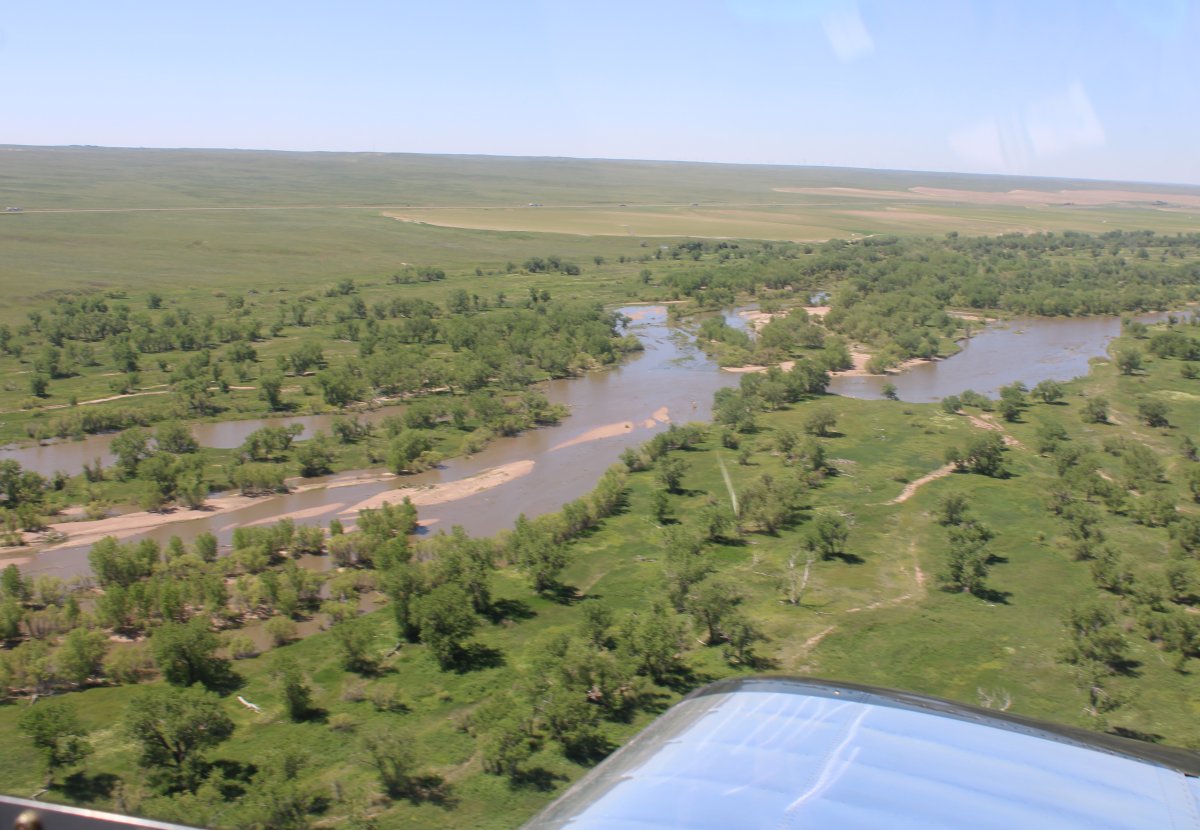 |
|
| Flat land. |
| |
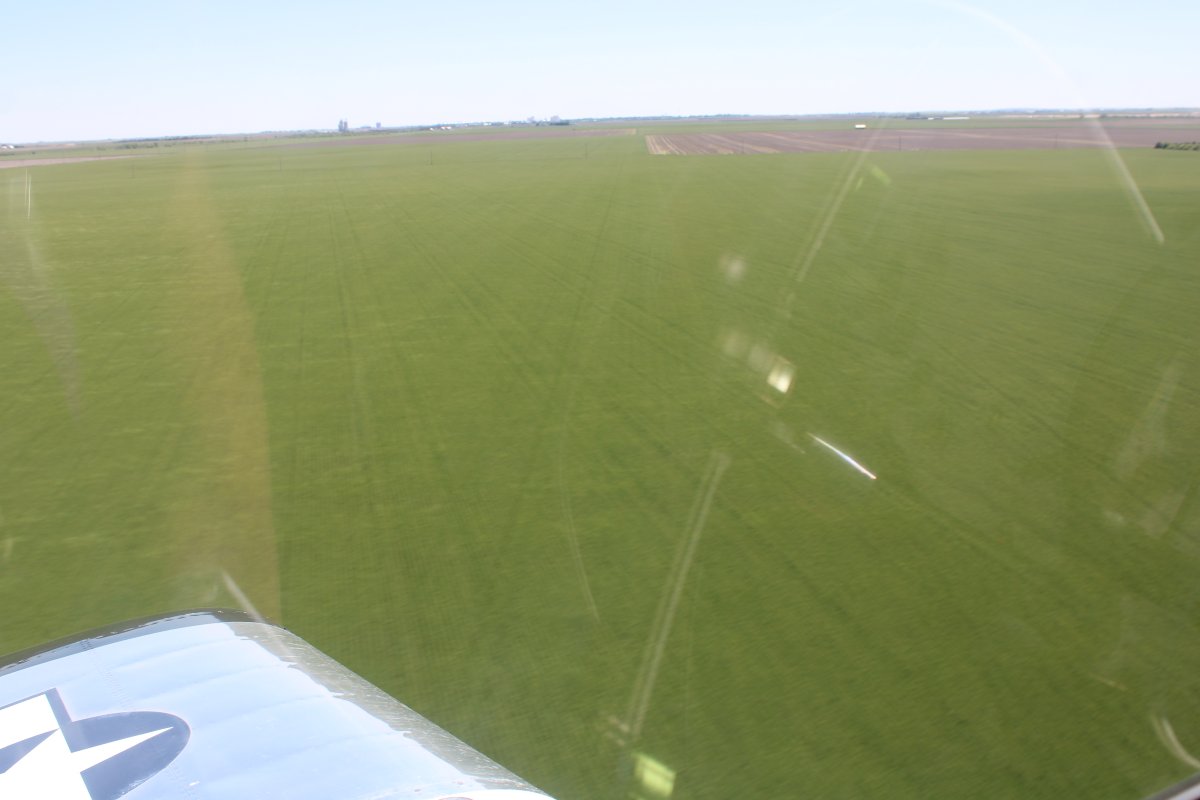 |
|
| Farm country. |
| |
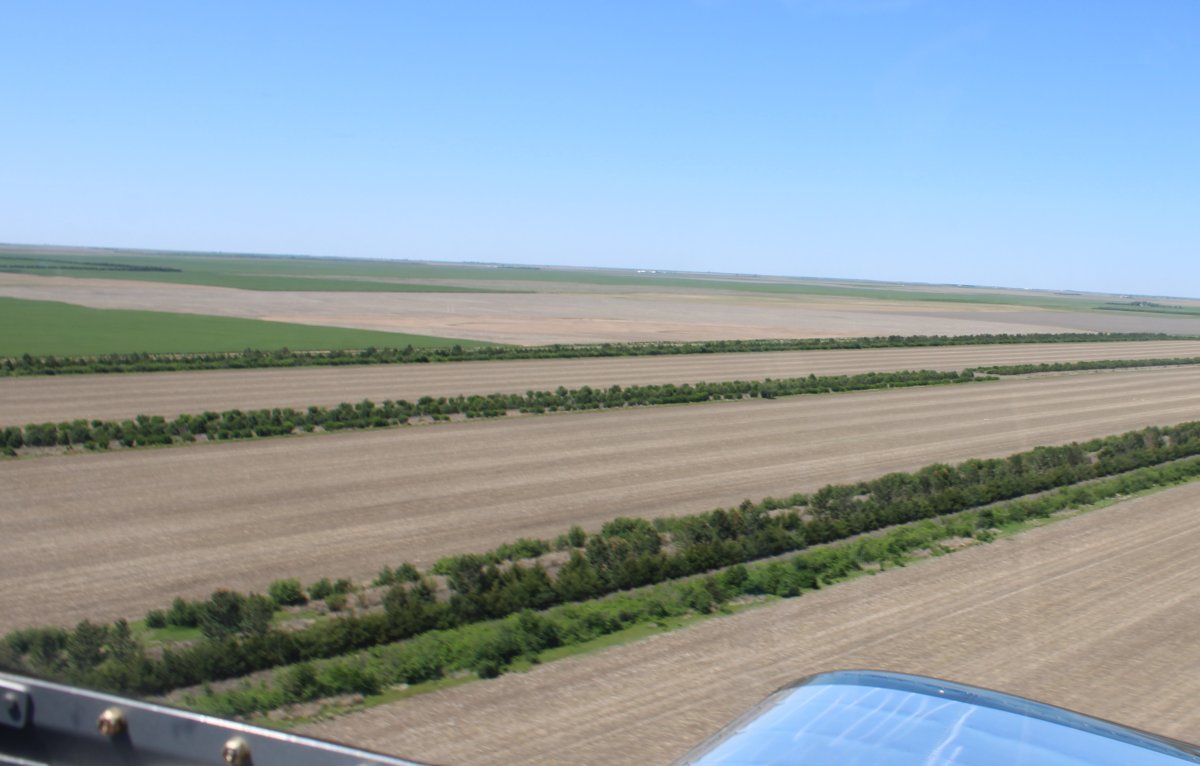 |
|
| Looking up at the mountains, LOL. |
| |
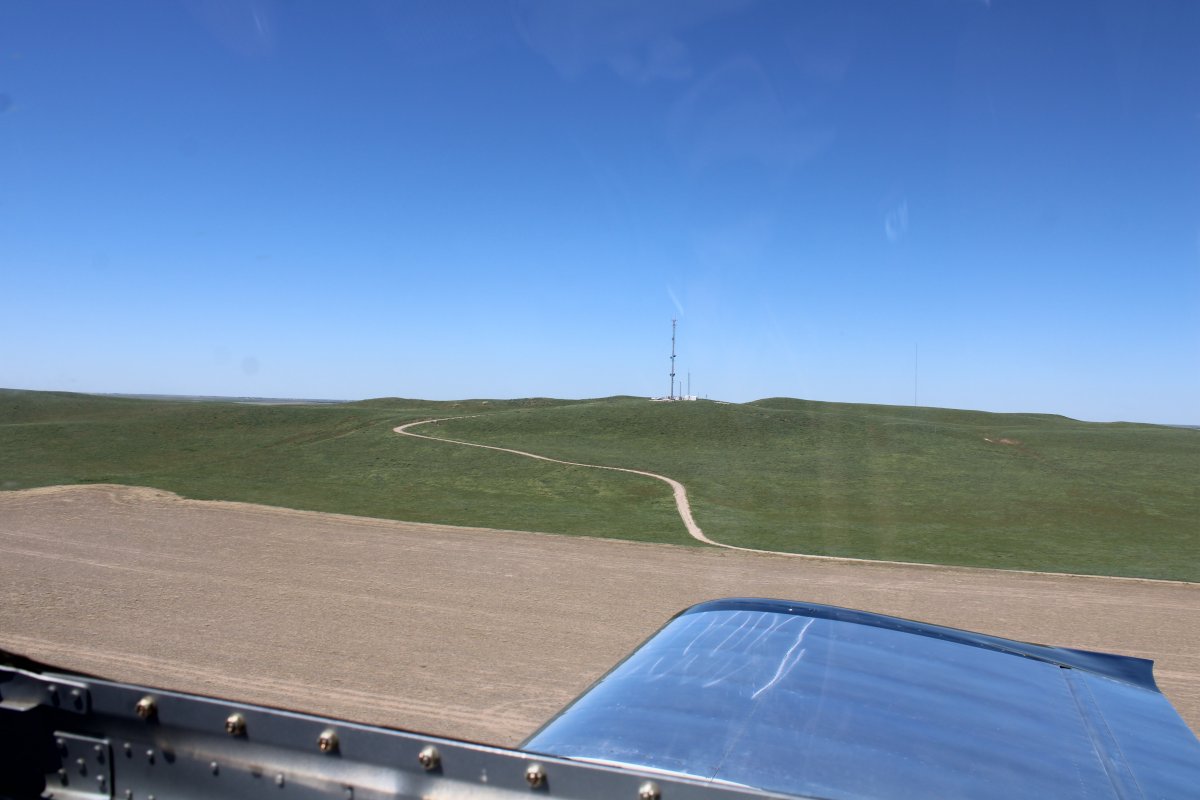 |
|
|
At some point I crossed into the northwest corner of Kansas.
|
| |
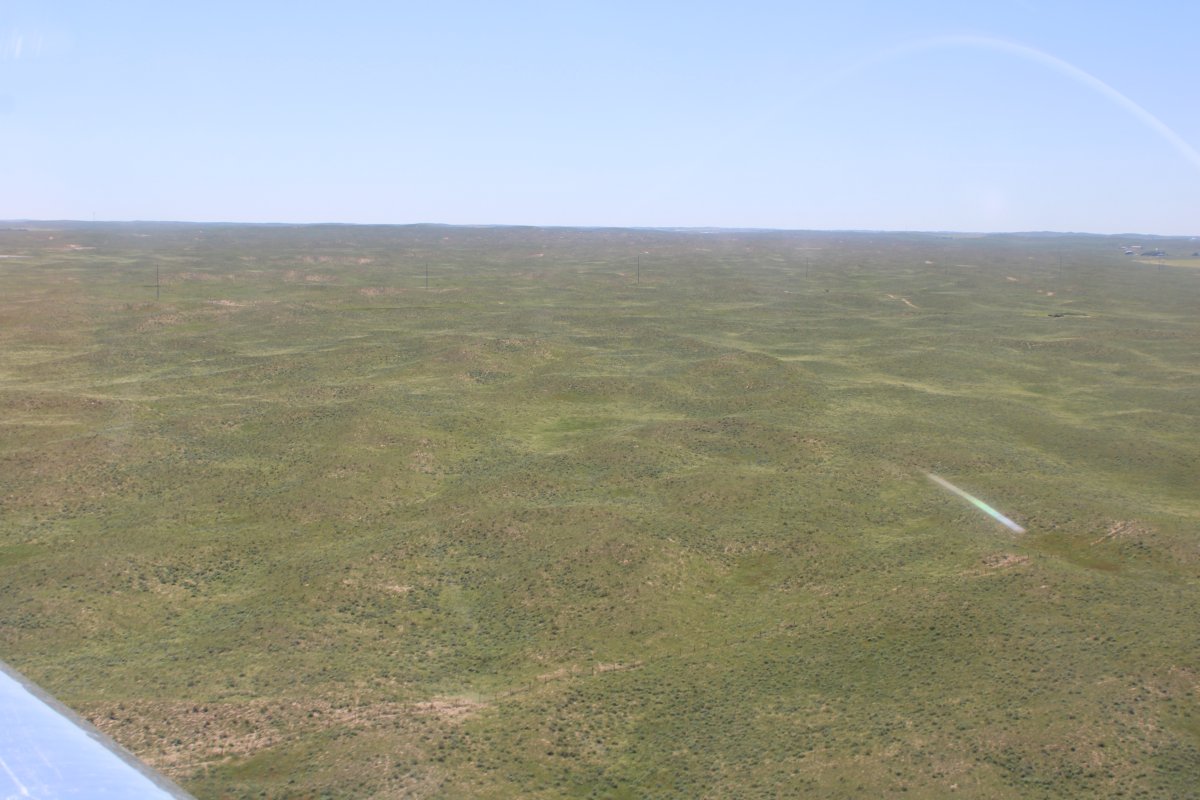 |
|
| I always have wondered how these circular irrigation rigs worked. |
| |
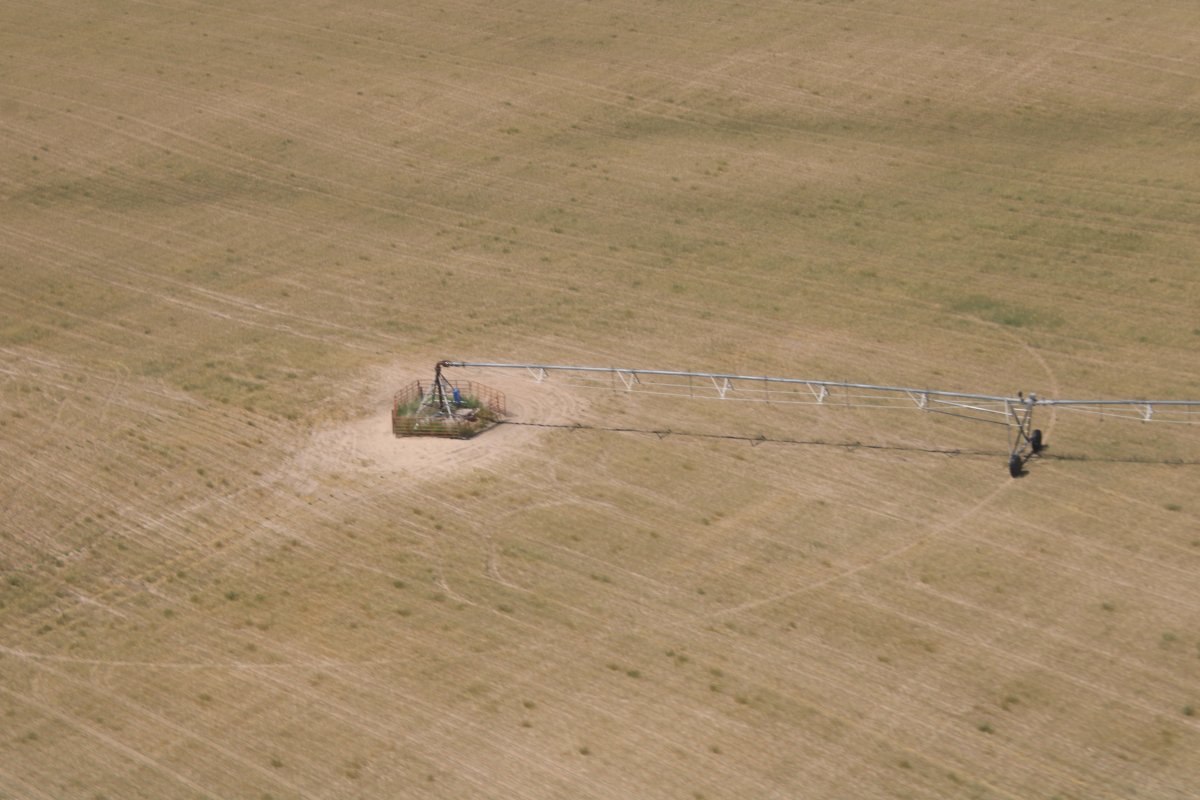 |
|
|
It was mid-afternoon when I came to the town of Goodland, Kansas. The airport looked like a promising overnight stop.
|
| |
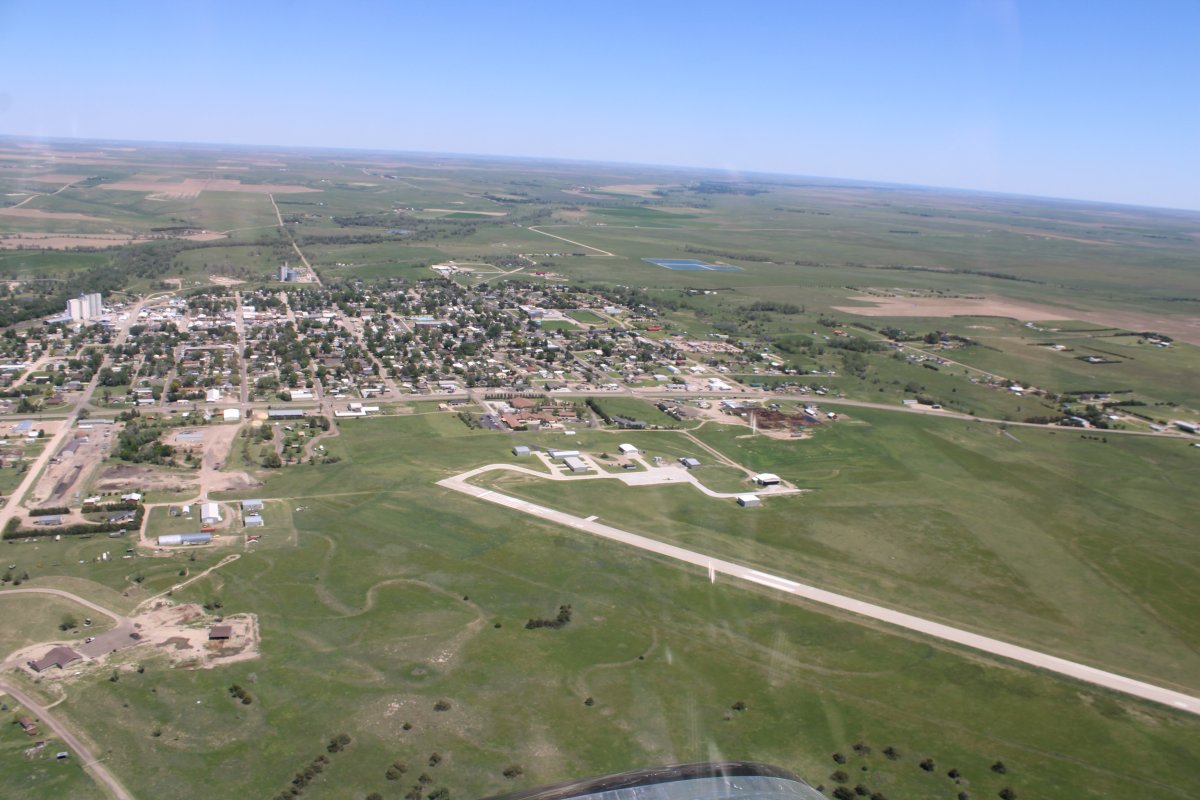 |
|
| Overhead Goodland Airport (KGLD). They have two long perpendicular runways, plus a couple of short turf strips. Not a problem finding a runway into the wind here! |
| |
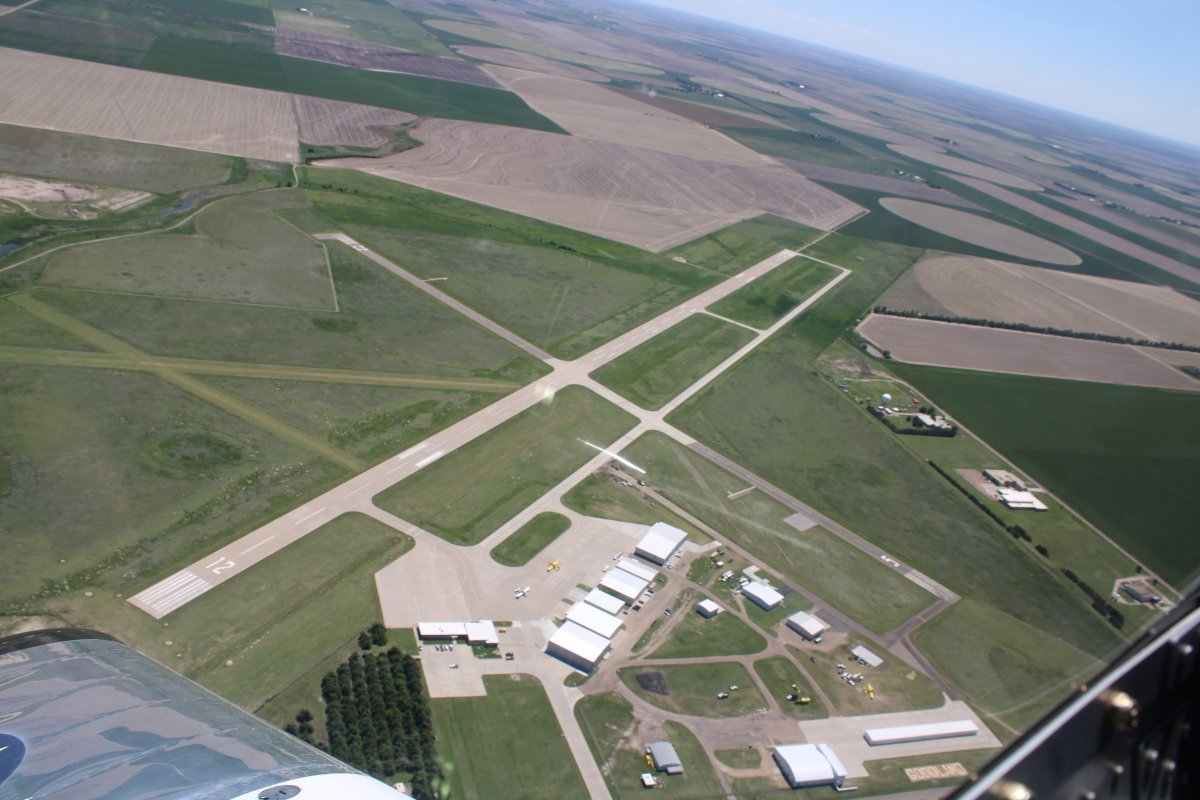 |
|
|
Parked on the ramp at Goodland Airport. As you can see, crop dusting is big here.
This turned out to be an outstanding airport for an overnight stop. The folks at Butterfly Aviation are very friendly and helpful. Avgas price is excellent. The Courtesy car was available for overnight use. There was even an on-field restaurant where I had chicken fried steak for lunch. In town, there is inexpensive lodging -- I stayed at the Rodeway Inn -- and numerous restaurants.
|
| |
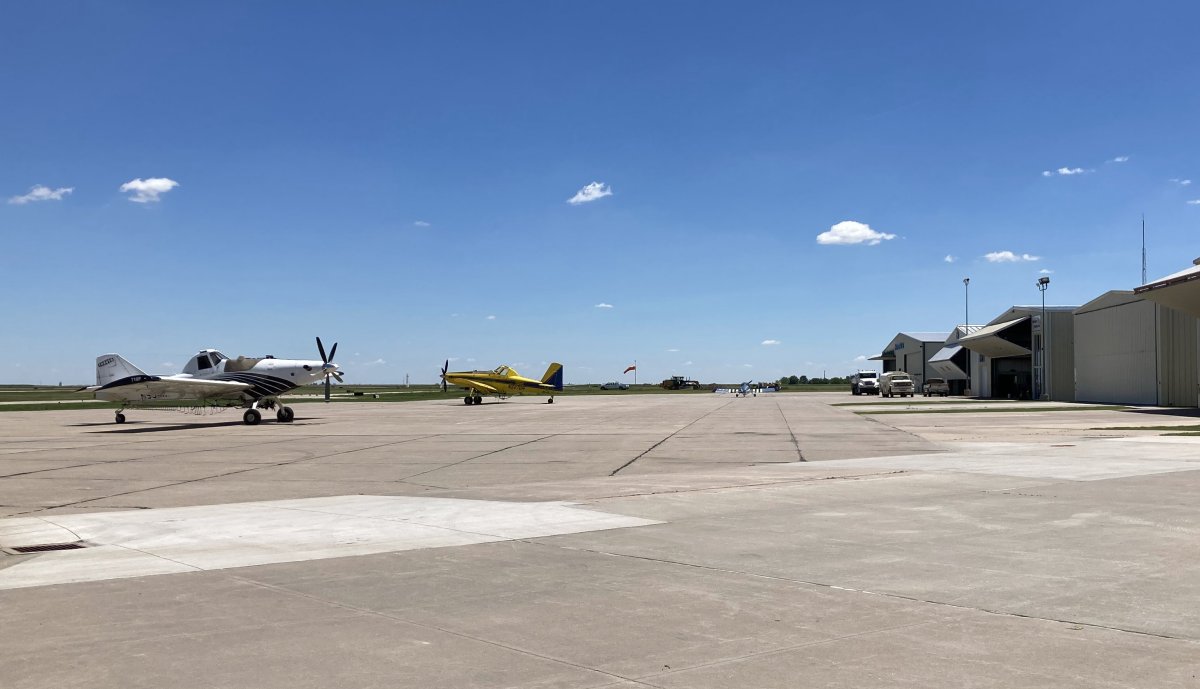 |
|
| One of the Butterfly Aviation folks told me this is the Cessna 195 capital of the world. They do a lot of maintenance and restoration on them here. |
| |
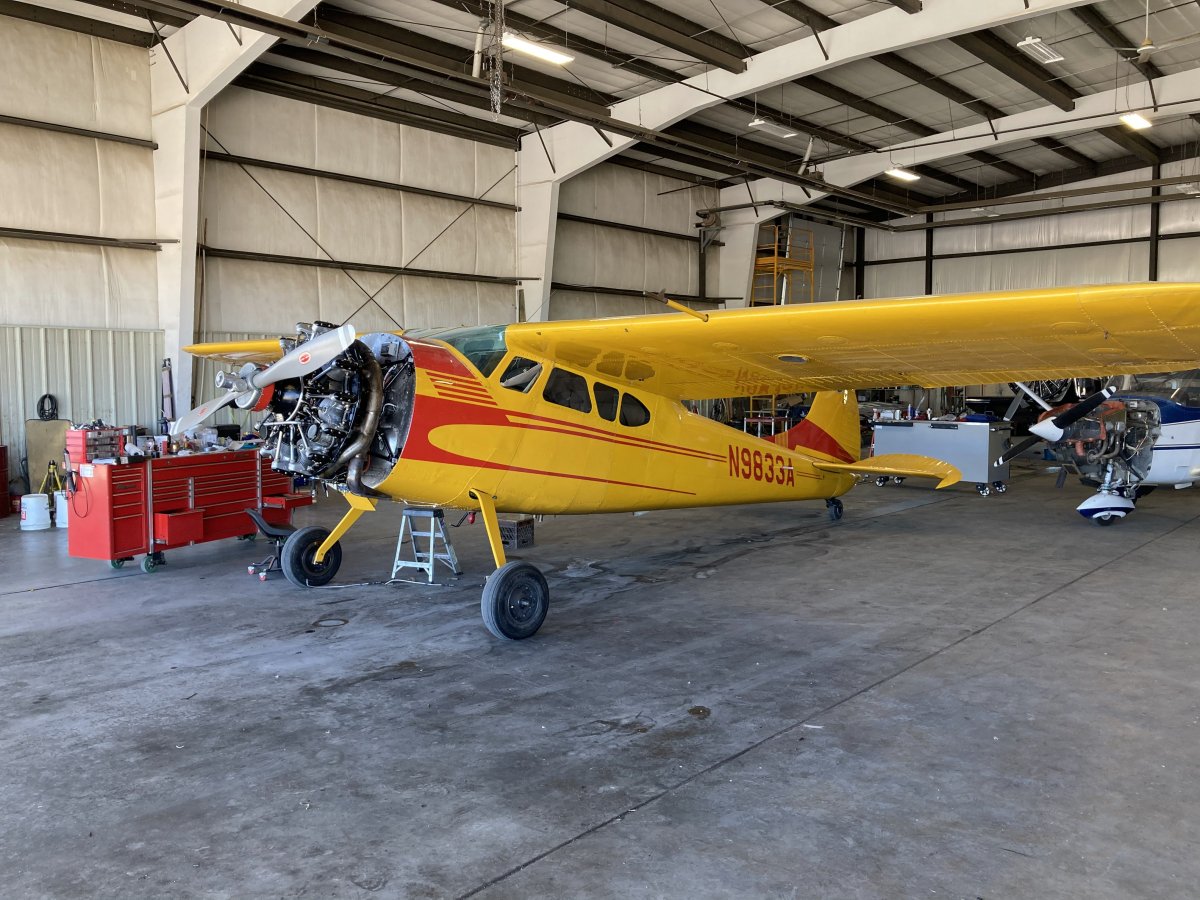 |
|
|
On the way to the motel, I spotted this town history museum and stopped in.
|
| |
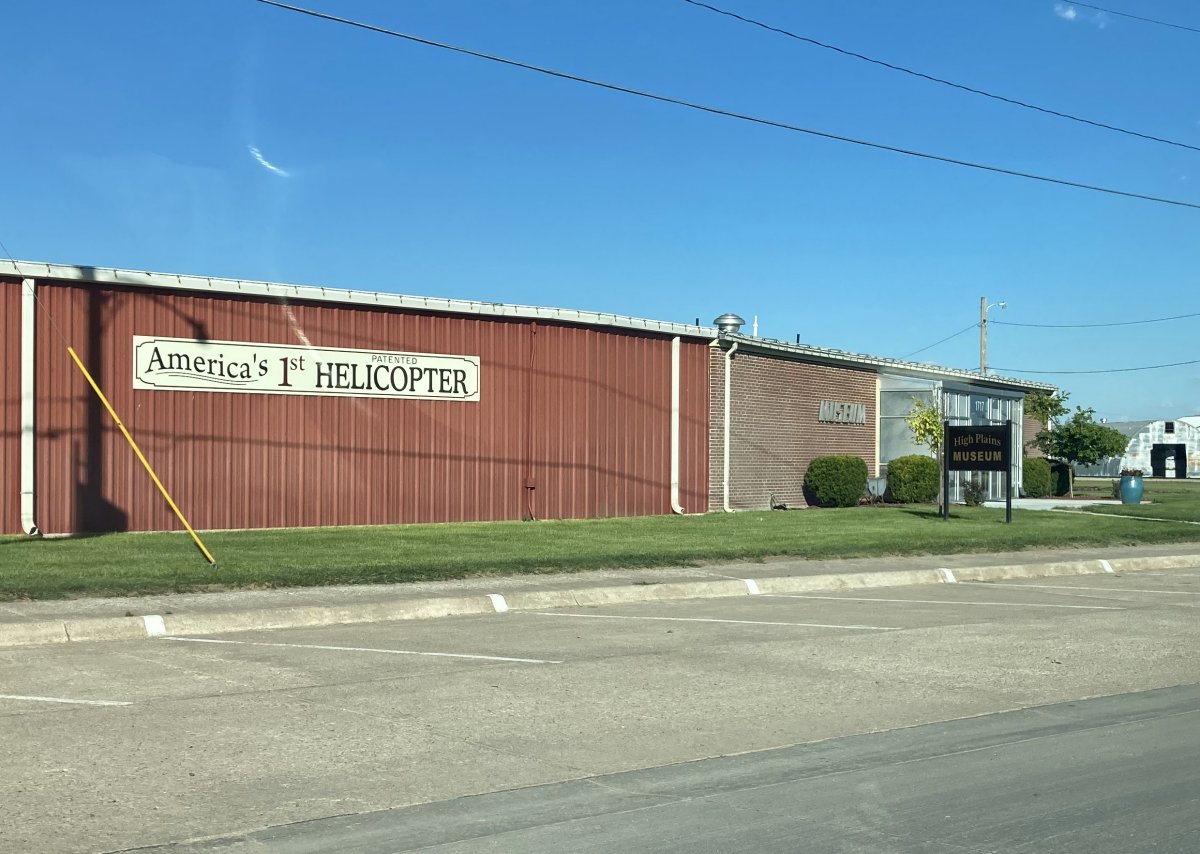 |
|
|
Big Bison
|
| |
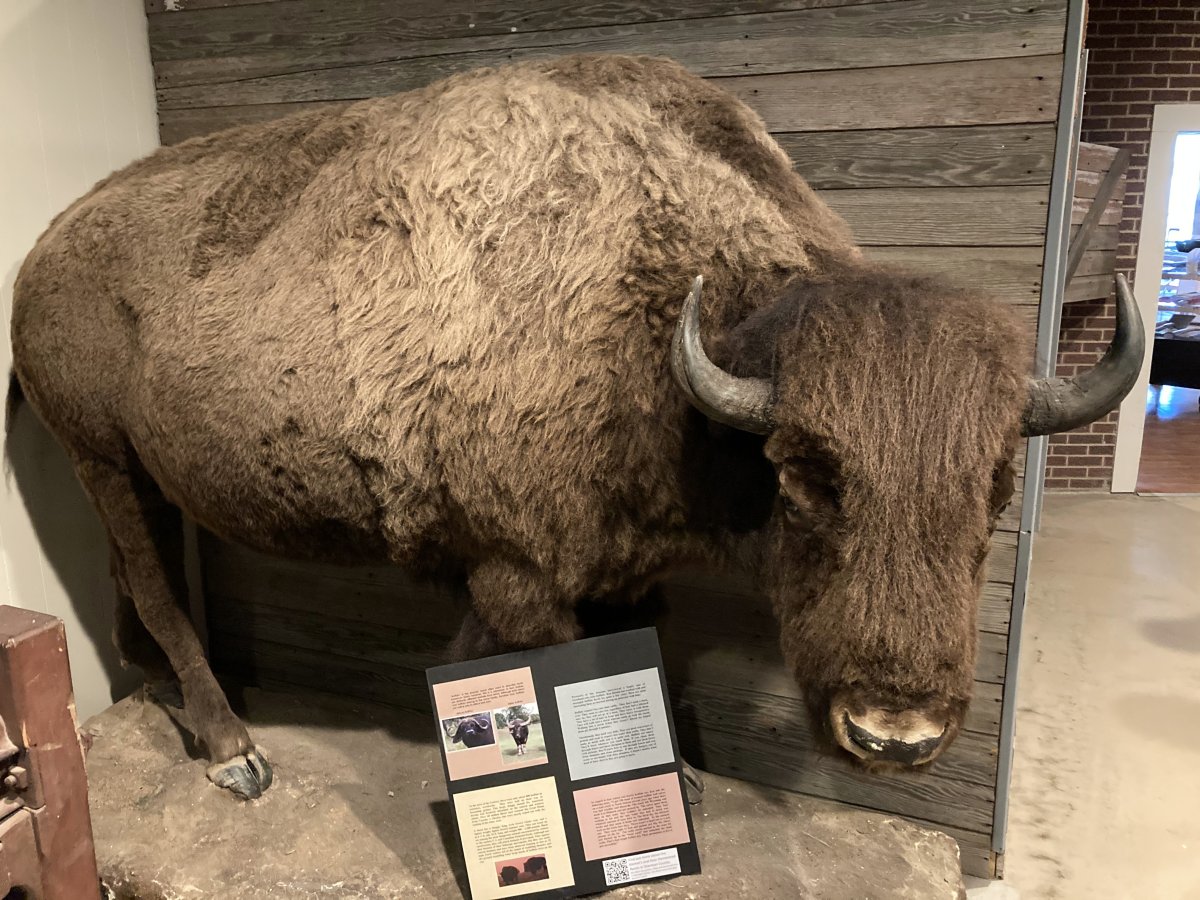 |
|
|
The flagship artifact of the museum was the world's first helicopter [although it never flew]. In 1909, two local machinists -- William J. Purvis and Charles A. Wilson -- started building the flying machine. It had two seven horsepower gas engines but weighed 400 pounds. Stock was sold to raise $30,000 -- a lot of money in those days -- to build it. In June 1910 they tried flying it, and it crashed of course. Purvis and Wilson left town shortly thereafter. Only two rusted pieces are all that remain of the original helicopter. This is a replica built in 1976 using measurements and drawings of a patent submitted in 1910.
|
| |
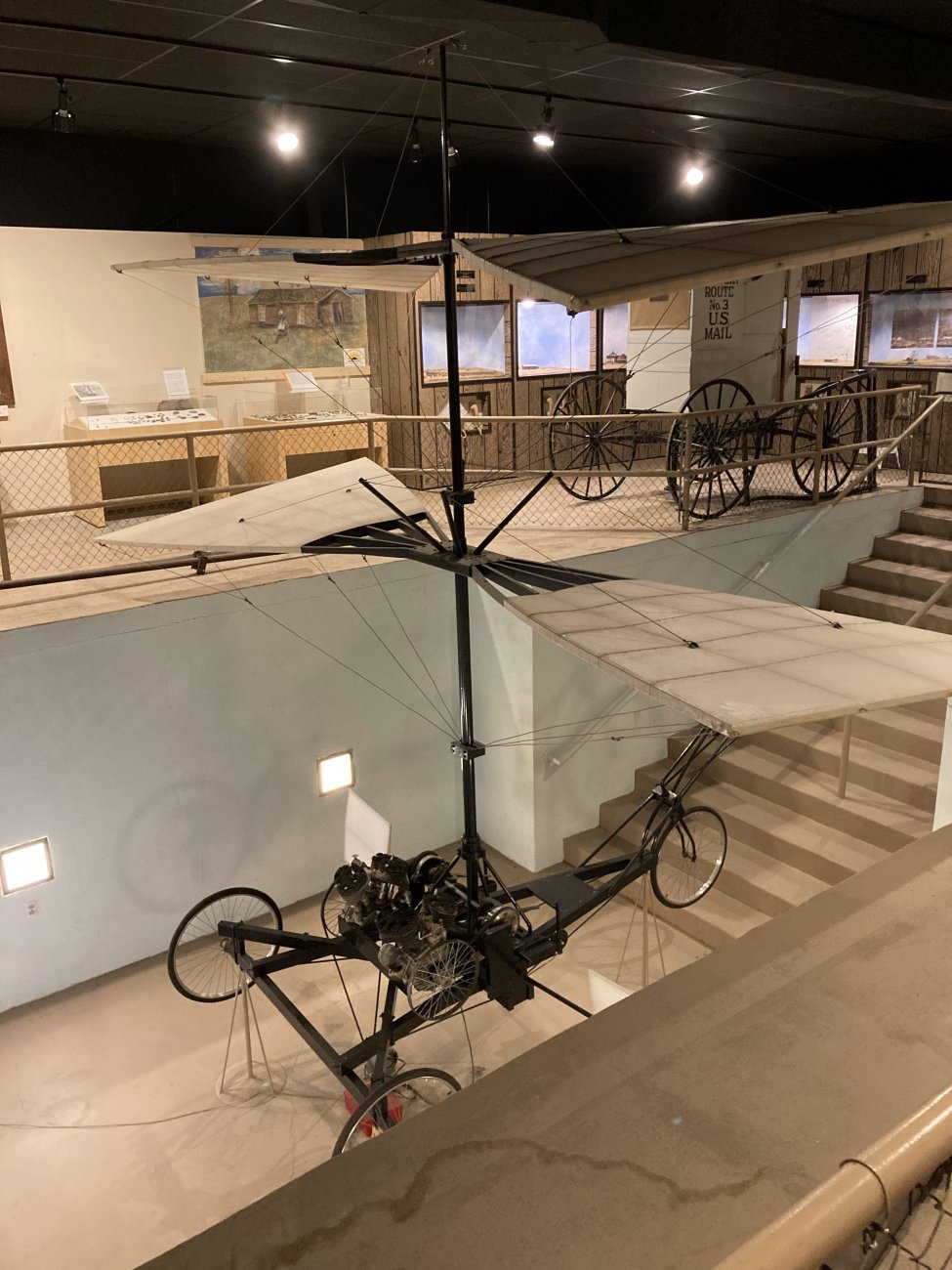 |
|
| A look at the helicopter from another angle. Would I try flying it? Not a chance. This reminds me of the Langley Aerodrome. Someone just puts together something that looks like it might fly. And of course, it doesn't. The Wright Brothers spent years of hard work thinking, testing and experimenting before they accomplished manned flight. |
| |
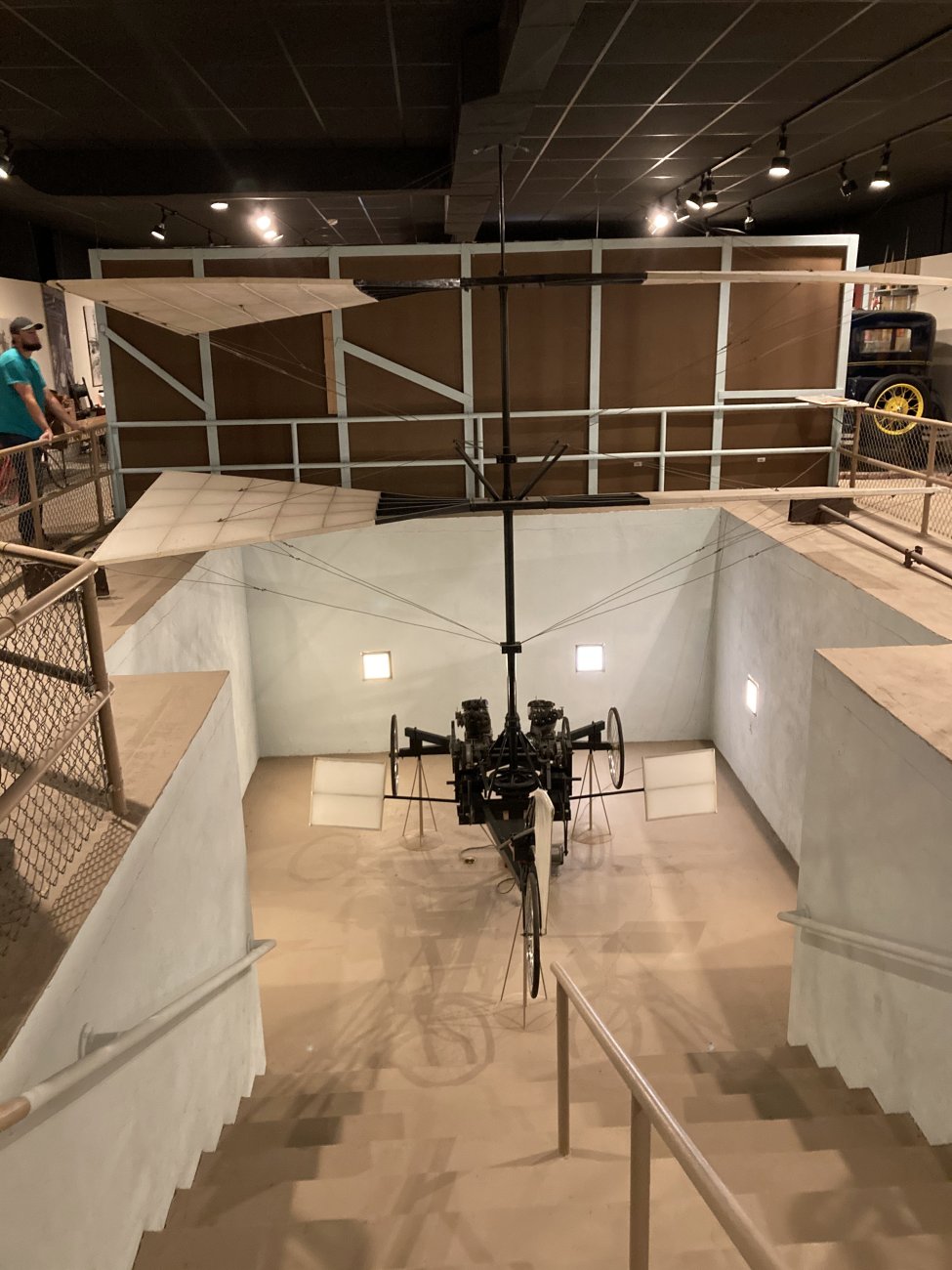 |
|
| A 1902 Holsman automobile, bought and used by a Dr. A.C. Gulick. It had a two cylinder engine and a top speed of 25 mph. It cost about $600. |
| |
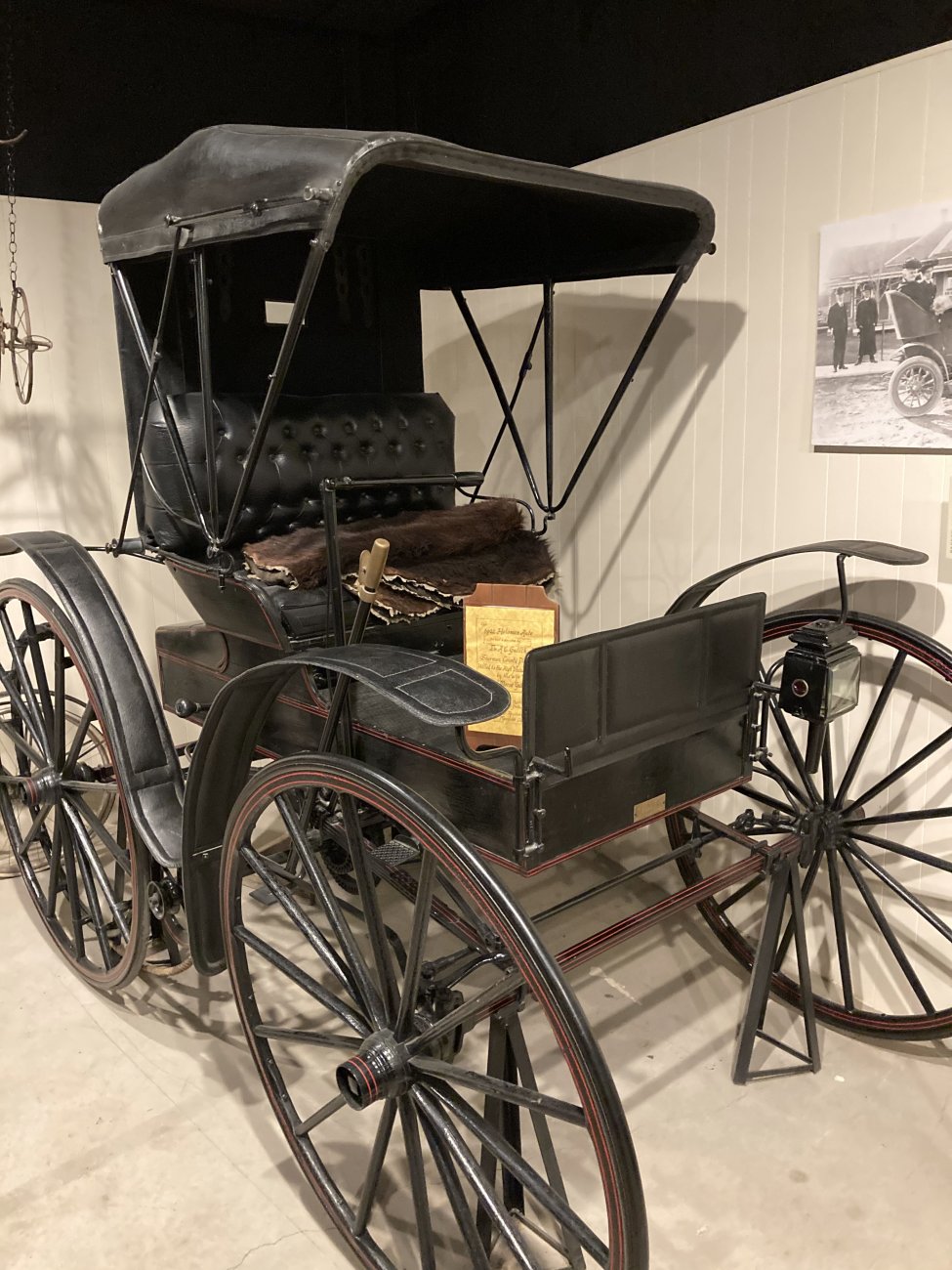 |
|
| Dr. Gulick driving his Holsman. He was one of the first automobile owners in the county. |
| |
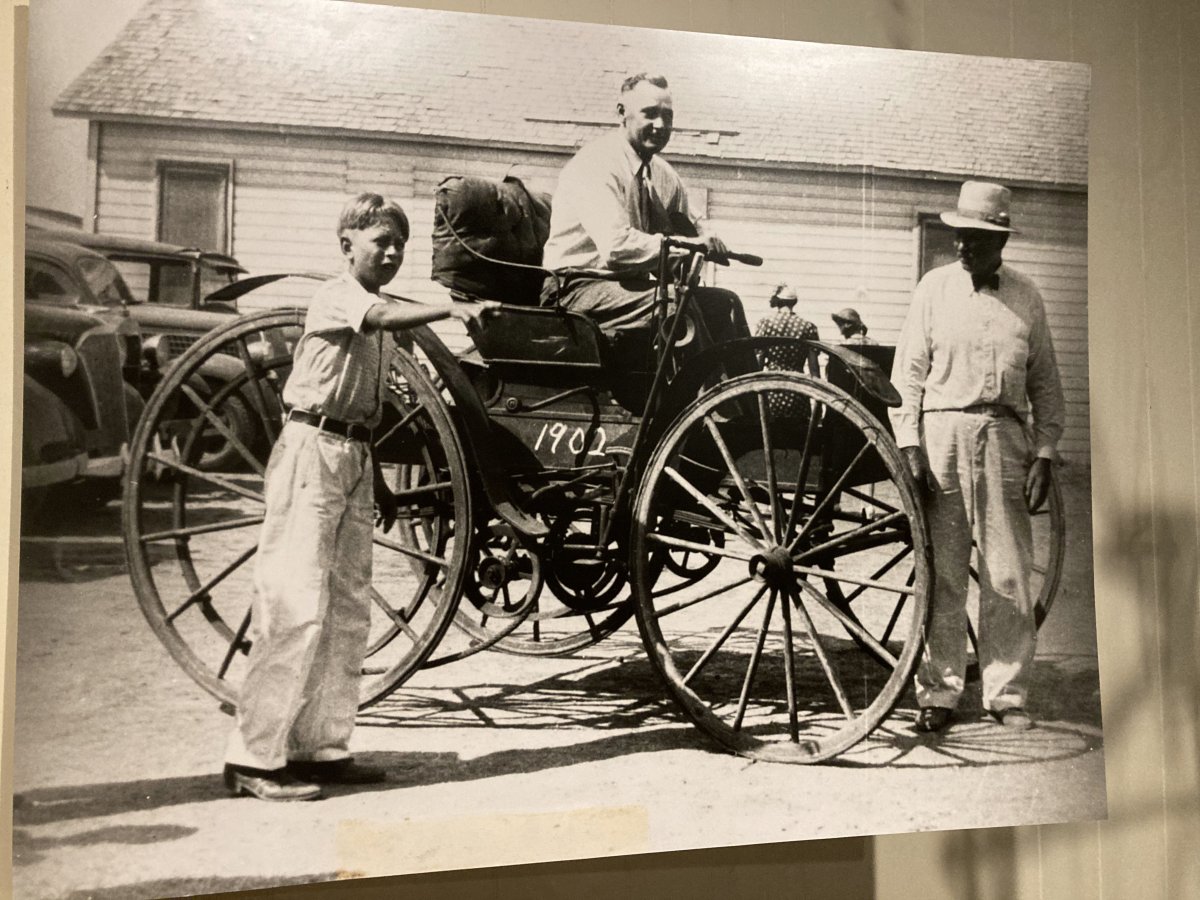 |
|
|
Goodland's main street is unique. It's all brick. I had a delicious chicken dinner here at L & T Family Restaurant.
|
| |
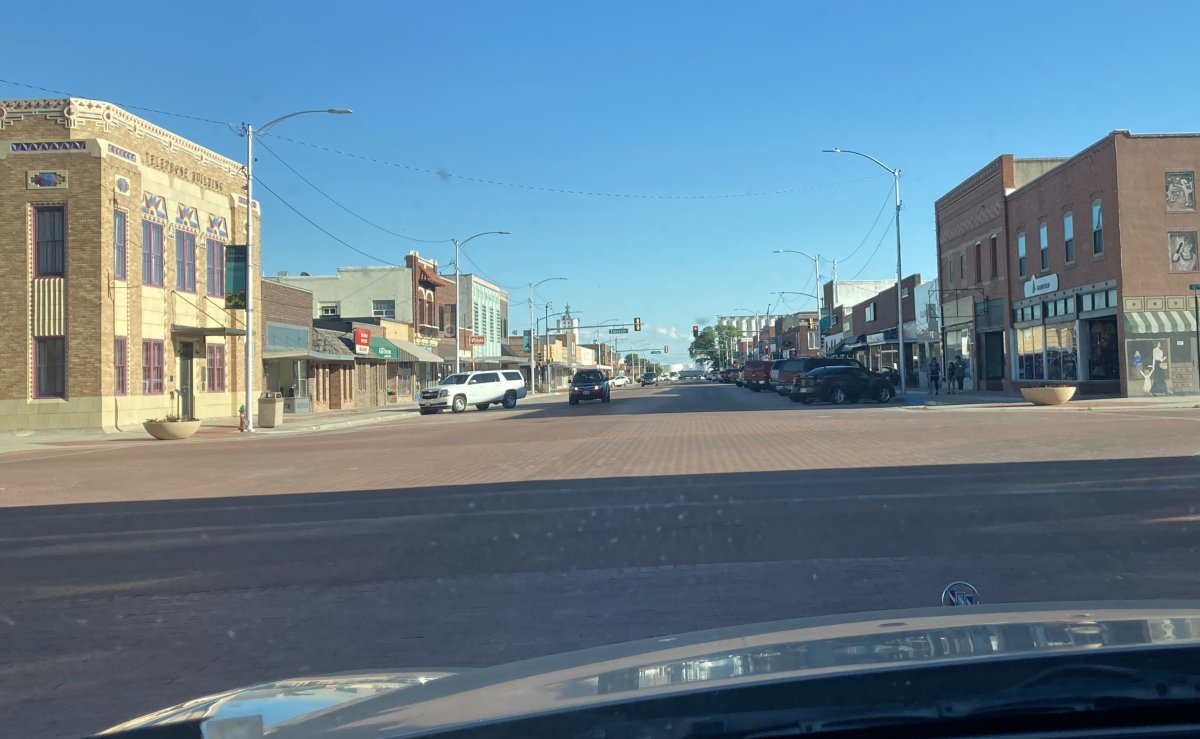 |
|
| Another unique thing about Goodland is this giant reproduction of Vincent Van Gogh's "Three Sunflowers in a Vase" painting. They call it the Big Easel. It's 80 feet tall. |
| |
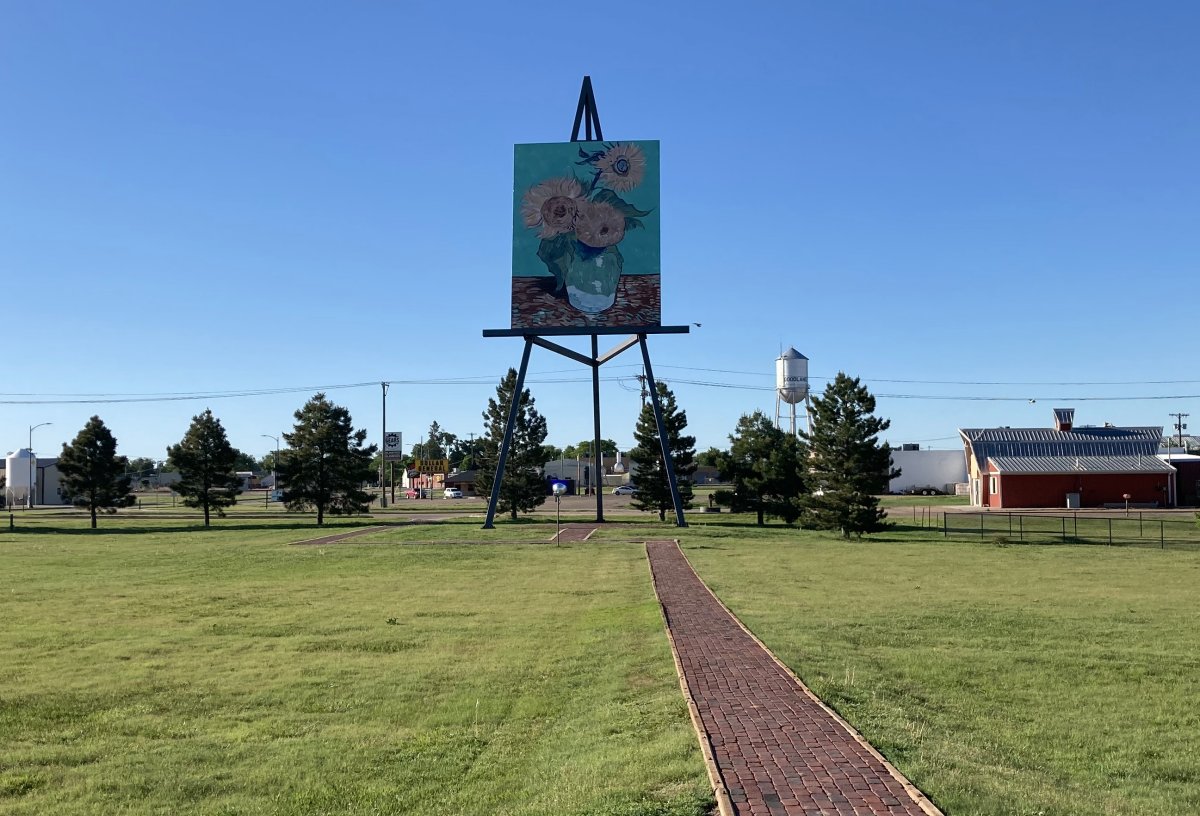 |
|
| |
| |
|
|
|
|
|
|
































